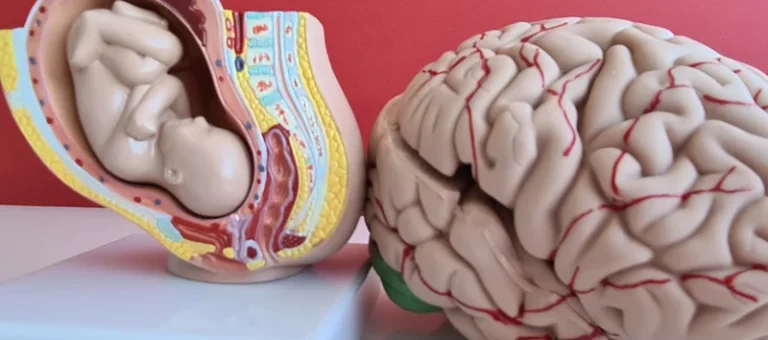Alcohol-Related Disparities Among Women: Evidence and Potential Explanations Alcohol Research: Current Reviews

Thus, it is not clear whether these findings (especially those based on data collected from the early 2000s) accurately reflect DSM-5 AUD patterns among women, as the latter have not yet been examined. But confirmation is needed, as the NESARC-III analyses were not restricted to women. Because these studies were based on older data that, in some cases, were collected nearly 20 years ago, data from the 2017 National Survey on Drug Use and Health (NSDUH)15 were analyzed to provide updated national estimates for women. As shown in Table 1, most of the significant racial/ethnic differences in DSM-IV alcohol dependence prevalence were no longer apparent when abstainers were excluded.
Support Our Mission

Millions of women in the United States engage in drinking behavior that poses a substantial risk to their health and well-being, particularly young women in their late teens and early twenties. Women may also face challenges in acknowledging and admitting a drinking problem and in accessing help when they need it. These challenges range from not being aware that their drinking is a problem (i.e., “normalizing” their drinking based on what they perceive others are doing), being afraid to admit to problem-drinking due to societal stigma and worrying about how attending alcohol treatment would disrupt their lives. These barriers are important because evidence shows that once a person is drinking problematically, and becomes physically and psychologically dependent on alcohol, they are unlikely to recover on their own (Moos & Moos, 2006). It is crucial for women to be aware of the risks of heavy drinking and to have access to resources that support healthy drinking or abstinence if that is the best path for them.

Recovery of Cognitive Abilities with Sustained Abstinence
Maybe you start the night intending not to drink but then end up drinking anyway, or you planned to stick to one drink but end up drinking more. The sober curious movement and the rise of Dry January and Sober October are clear signs that people are taking time to step back and examine their relationships with alcohol. Weekend cocktails, a pint of IPA after work, or splitting a bottle of wine with friends may lead people to wonder just how big a role alcohol plays in their lives. This collective of women’s wisdom has become my “tribe.” We are greater together than the sum of our parts. “It’s become more and more socially acceptable for women to drink as much as men,” said Martin, who was not involved in the new research.
Women and men are equally capable of recovery
To make informed decisions about alcohol use, it is important that women be aware of these health risks and of the Dietary Guidelines for Americans, 2020–2025 for adult women of legal drinking age—they women and alcoholism can choose not to drink or to limit intake to 1 drink or less in a day, when alcohol is consumed. Some individuals should avoid alcohol completely, such as those who are pregnant or might be pregnant. Research from Sugarman’s colleagues found that women with alcohol use disorder had better outcomes when they were in women-only treatment groups, which included a focus on mental health and trauma, as well as education about gender-specific elements of addiction.
Recovery from addiction is possible
- ATF recruited these agents to serve their country and uphold the law during a time when women were still fighting for their right to vote.
- In “The Endocrine System and Alcohol Drinking in Females,” Finn extends this neurobiological review by examining the multidirectional interactions of alcohol, stress, and key gonadal sex steroid hormones and stress steroid hormones.10 Findings suggest promising directions for development of novel pharmacological treatments for alcohol use disorder (AUD).
- These findings as a whole reflect the stigma around having an alcohol problem, and research indicates this stigma is alive and well.
- “When we digest alcohol, it’s digested with an enzyme called alcohol dehydrogenase,” Sutton said.
- Emotion decoding skills are crucial when assessing one’s immediate social environment, providing valuable information regarding others’ internal affective state, enabling behavioral adaptation according to others’ thoughts and intentions, and facilitating social interactions in daily life.
In this article, sexual minority women, including bisexual women and lesbians, are defined based on sexual orientation. Bisexual women were most likely to report alcohol problems, with 70% reporting lifetime problems in contrast to 29% of heterosexual women. Identifying racial/ethnic and socioeconomic disparities in alcohol-related problems is not always a straightforward task, partly because of differential abstinence rates across racial/ethnic and socioeconomic groups. Although analytic decisions depend on research objectives (e.g., to establish general population rates, understand risk relationships, estimate residual racial/ethnic differences, or recognize the role of socioeconomic status in racial/ethnic differences), sensitivity analyses are always a useful option to gauge the effects of such decisions on study results and enhance interpretation. The survey also asked what sources of support women would seek out if they had an alcohol or drug problem; each participant was asked to select all sources that applied to her.

These results are much lower than those found in the Hazelden Betty Ford Foundation survey. However, the National Health Interview survey (from the CDC) found that 33% of Caucasian women ages binge drink (Keating, 2016). Notably, most women who completed the Hazelden Betty Ford Foundation survey were of this race and age range. Regardless of whether heavy drinkers are over-represented in the Hazelden Betty Ford Foundation survey respondents, it is clear that an alarming number of women engage in heavy drinking, which carries significant health and safety risks. In addition, Black women in this study experienced greater sedating effects from alcohol than White women. In view of the greater cumulative and chronic stress experienced by Black women compared with White women,51,65 this finding of greater sedating effects of alcohol might be a factor in Black-White disparities in persistent heavy drinking and AUD among older women who drink.
- Women generally have less body water, which dissolves alcohol, than men of the same weight.
- Reflecting on habits and patterns can give you a clearer picture of how big a role alcohol plays in your life.
- Physicians and public health officials recommend that women avoid drinking any alcohol during pregnancy.
- A systematic review of transgender individuals (including gender minority women) by Gilbert and colleagues found estimates of binge drinking among transgender individuals ranging from 7% to 65%, with estimates of lifetime and past-year DSM-IV AUD prevalence at 26% and 11%, respectively.29 More research is needed on these groups.
- This section reviews whether AUD disrupts this protective factor as a whole or interferes with selective processes.
New study shows alcohol deaths on the rise in women. What are the warning signs?
Log in or create an account for a personalized experience based on your selected interests.

Receive free access to exclusive content, a personalized homepage based on your interests, and a weekly newsletter with the topics of your choice. Dr. Schneekloth conducts research in the field of addiction psychiatry, particularly alcoholism research and transplant psychiatry. The ultimate guide, offering real talk about menopause, straight, honest info for managing symptoms and the keys to optimizing your health for the long run – from one of the top doctors in the field of women’s health and other experts from Mayo Clinic. Receive free access to exclusive content, a personalized homepage based on your interests, and a weekly newsletter with topics of your choice.
For student athletes, mental wellness is a game changer
- Men who abuse alcohol are more likely to enter alcohol-treatment programs, whereas women are more inclined to seek help from primary care practitioners and mental health counselors.
- While alcohol misuse by anyone presents serious public health concerns, women who drink have a higher risk of certain alcohol-related problems compared to men.
- I’m grateful for my New Life and encourage every person to find the path works for you.
- In another study, women with alcohol addiction who attended treatment stated they were undeserving of support/help (Gunn & Canada, 2015).
- Drinking trajectory studies that extend beyond the 20s are rare, but there is some evidence of Black–White disparities in the age and duration of heavy drinking among women who reported ever drinking in their lifetime.
Terry D. Schneekloth, M.D., a Mayo Clinic psychiatrist with expertise in alcoholism and addiction, helps break down some of the differences. The suit also stated that the drink was advertised as “plant-based and clean” and that it had about as much caffeine as Panera’s dark roast coffee. The lawsuit added that the Charged Lemonade contained guarana extract and the equivalent of almost 30 teaspoons of sugar when served in size large. Panera Bread has settled a lawsuit with the family of a woman with a heart condition who died after drinking a Charged Lemonade. Three people, aged 31 to 59, are being investigated for conducting unlawful lotteries, and more than $140 in cash and stacks of betting slips were seized from the trio. Under the Women’s Charter, anyone who manages or assists in the management of a place of assignation may be jailed for up to five years and fined up to $100,000.

Cooper plans to return to school this fall for a master’s degree in social work, with the goal of working to change those gender disparities in the field. Women generally have less body water, which dissolves alcohol, than men of the same weight. That means the same number of drinks leads them to have higher concentrations of alcohol in the blood, and their body tissues are exposed to more alcohol per drink. When Gillian Tietz began drinking in graduate school, she found a glass of wine helped ease her stress.

No Comment